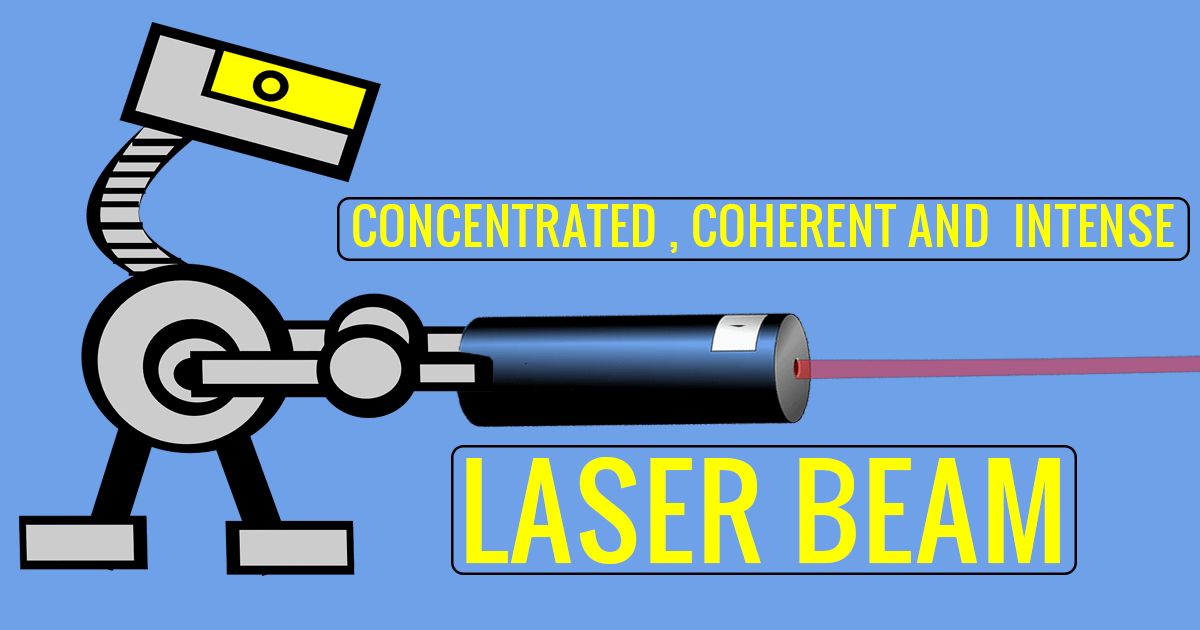The term “laser” may concern you, regardless of your technical background. So you should know this technology: What is a laser? Types, working, and classification of Lasers by safety norms.
Many products used in daily operations like cancer treatments, eye surgeries, industrial cutting, engraving, etching, marking, and much more involve laser technology.
Would you like to learn about laser devices? Let’s get started.
What is a Laser?
LASER is a light amplifier device that emits coherent, monochromatic, and one-directional light beams through an optical amplification process.
We will first discuss the components of a laser device and then move on to its properties and types.
Laser light has three main parts: Power Source, Lasering Gain Mediums, and Optical Cavity.
Components of Laser
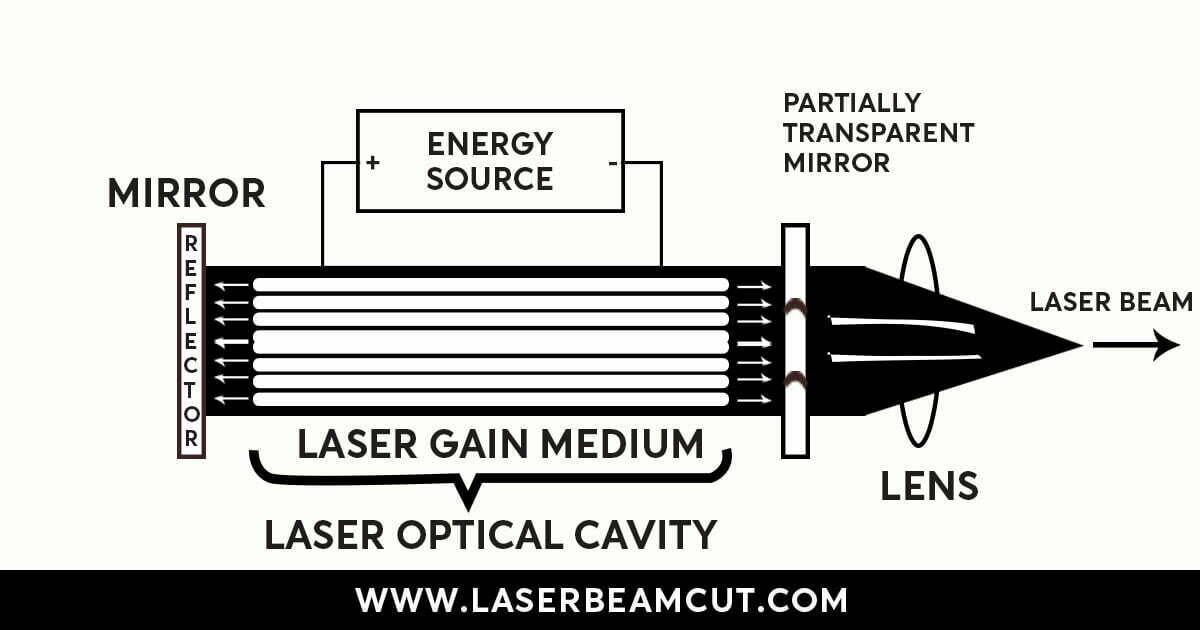
Energy Source:
The Gain Medium molecules are excited with energy.
Energy sources may be electrical, optical, chemical, or another.
Laser Gain Medium
The laser-machine Gain Mediums are excited by the energy source and emit light in all directions. Its medium may be a gas, liquid, or semi-conducting material.
The laser-machine type depends on their gain mediums.
Laser Resonator or Optical Cavity
A resonator is a two-mirror reflective system used to amplify the power of light by bouncing it back and forth between two media.
One end is a higher reflector mirror, and the second one is a partially transparent mirror that allows emitted energy light to leave the optical cavity to produce a laser-device beam.
At this stage, we know the basics of the laser device. It is time to understand how the actual laser device works. Let’s go.
How Does a Laser Work?
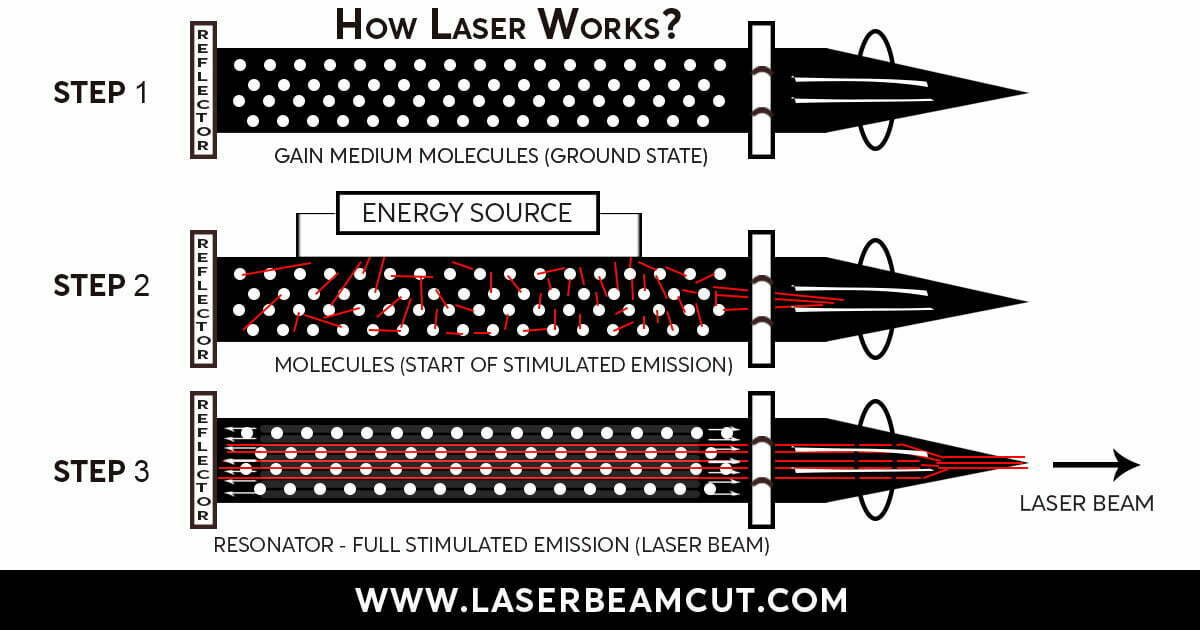
Recall laser-device components; the Lasering Gain Mediums contain a gas, liquid, or semiconductor material. In many cases, molecules in a medium are in the ground state.
Laser-device Gain medium excites their molecules to emit photons in specific spectral lines by any power source.
When they get energy, they generate light beams.
A Resonator focuses incoming light beams with the help of a two-mirror reflective system.
A laser-device beam produces by reflecting the incoming light beams back and forth between two media.
The coherent beam generates by fully stimulated emission.
Characteristics of Laser Light
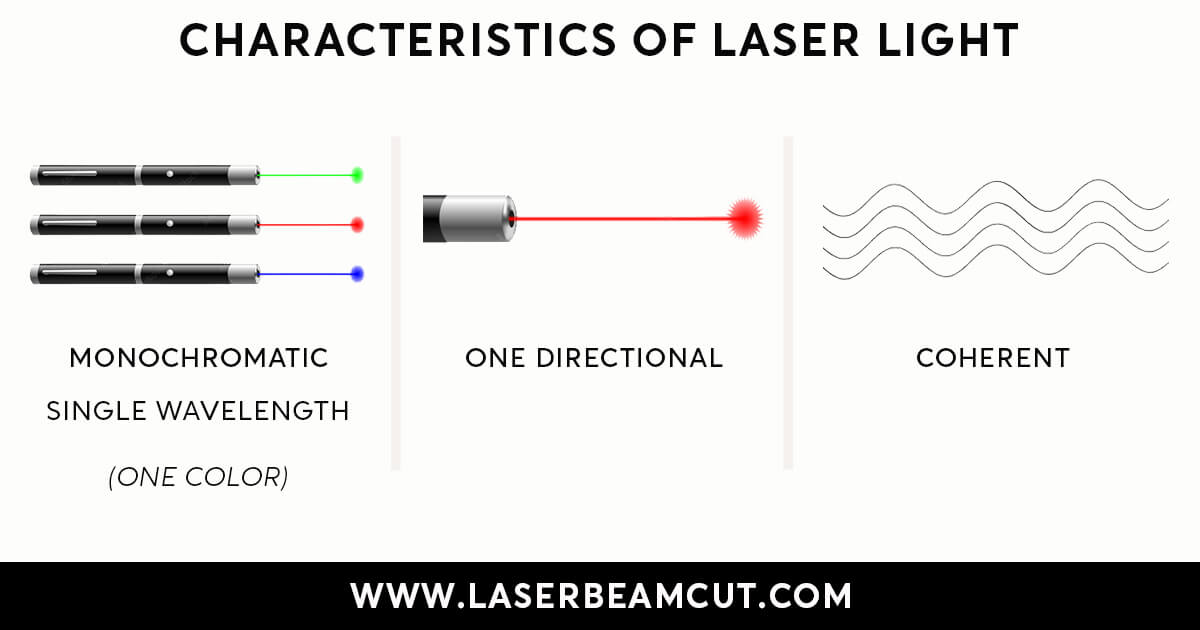
Laser-machine light characteristics are monochromatic, directional, and coherent.
Monochromatic
A laser device produces lights of one wavelength and is monochromatic. White light, on the other hand, contains colors.
Directional
A laser-device beam is highly directional and narrow. So that lights travel straight in one direction.
Coherent
Laser-machine lights are coherent. It has wavelengths in a phase, which means that light of different frequencies produces the same intensity.
Now that you know the basics. Next, Learn about the variations and classifications of a laser-machines.
Modes of Laser (Classification of Lasers based on Output)
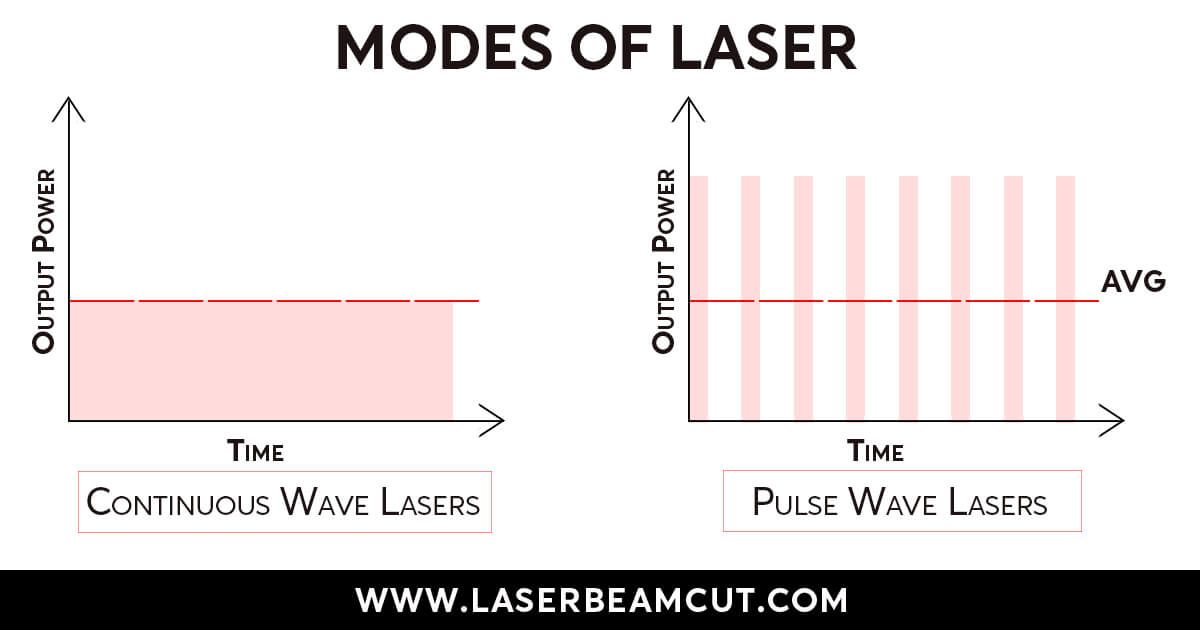
- Continuous Wave Lasers
- Pulsed wave Lasers
Continuous Wave Laser Devices
Continuous-wave laser types emit a constant energy beam throughout the operation of the laser.
Applications like cutting and welding materials use high-power output lasers.
Pulsed Wave Laser Devices
The pulsed-wave laser machine emits a pulsed energy beam during its operation. These provide a comparatively lower power output than continuous wave lasers and use for applications like spot welding and laser engraving.
It is further differentiated as they have different pulse duration, such as picoseconds, femtoseconds, nanoseconds, and milliseconds.
These laser devices have numerous applications due to their different pulse durations.
- Laser hair removal
- Spectroscopy
- Material processing operations
- Medical surgeries
- Precise engravings
Types of Laser ( Classification of Lasers based on Medium )
Laser machines have five variations based on their Gain Medium type.
- Gas Laser
- Solid state Laser-device
- Fiber laser-device
- Dye or Liquid laser-devices
- Semiconductor laser-device
Gas Lasers (Classification of Lasers based on GAS MEDIUM)
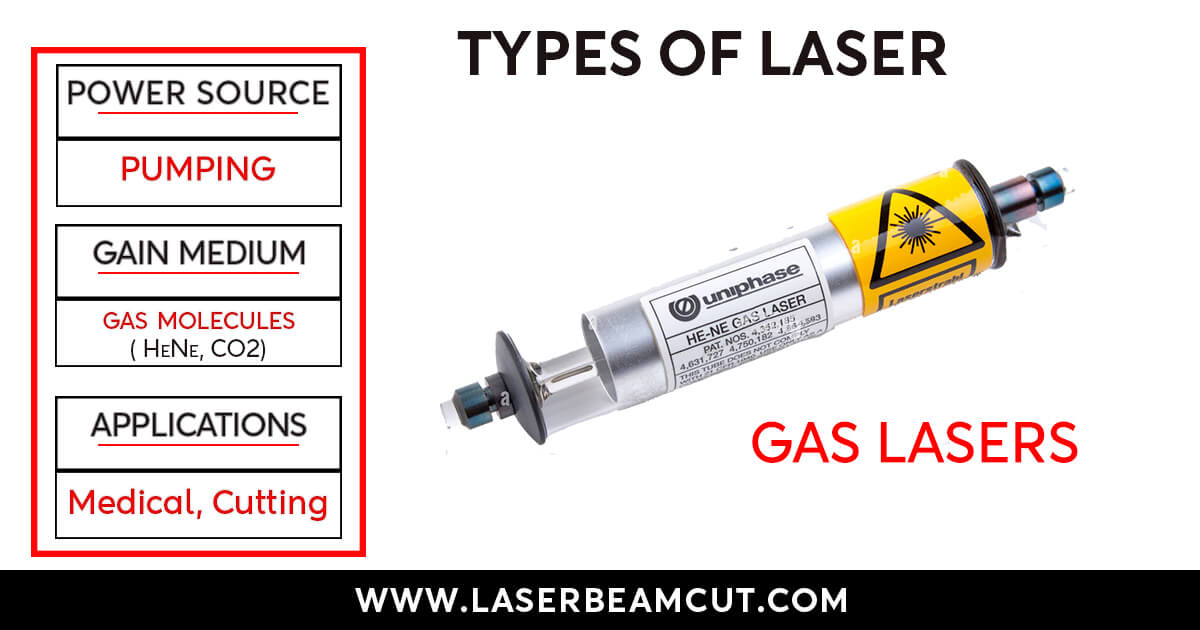
Gas lasers use gas molecules (such as HeNe or CO2) as the gain medium. The gas molecules are excited by an electric power source, which causes them to emit a laser beam.
We can focus the beam onto a single point to generate an effective ray of light.
Gas laser devices typically operate at different wavelengths ranging from 190 to 10600 nm.
HeNe lasers operate in the visible range of the electromagnetic spectrum, while CO2 lasers operate in the far-infrared range.
CO2 laser machines use in cutting materials such as glass, plastic, and metal. These machines are the most prevalent type of gas laser machine.
Medical and other industries use HeNe laser machines.
Solid State Lasers
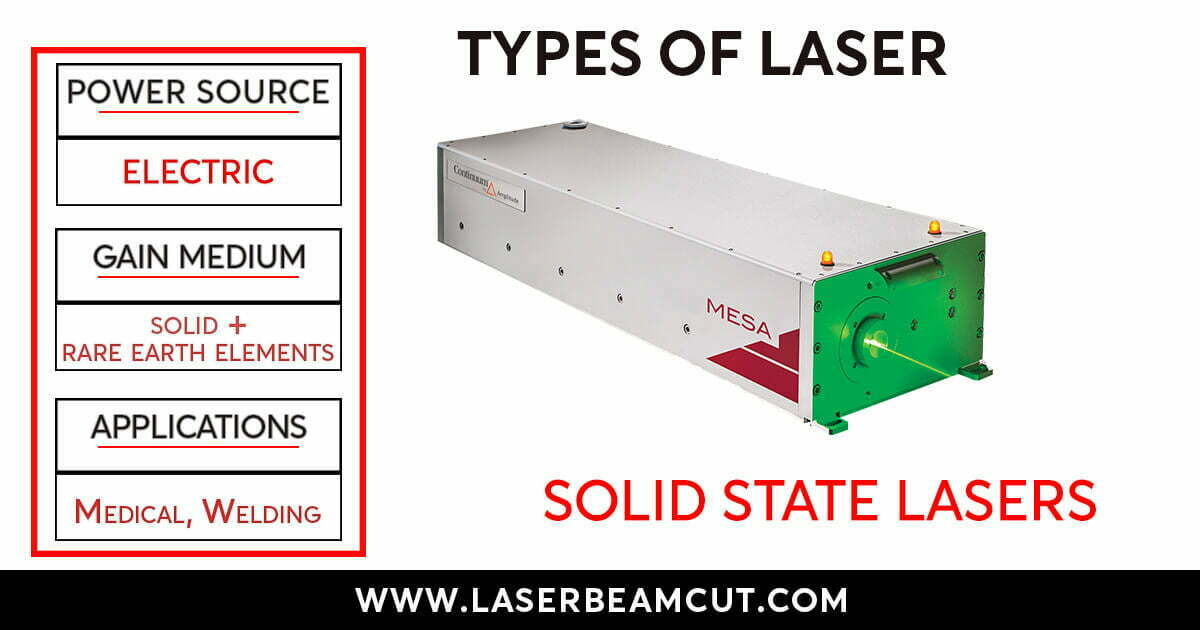
In solid-state laser-machine type, the gain medium contains solid (crystals or glasses) mixed with rare earth elements (neodymium, chromium, erbium, thulium, or ytterbium).
Nd: YAG and ruby lasers are the most common solid-state laser machines.
Nd: YAG laser devices use in material processing applications, while the ruby laser device uses in cutting, welding, and tattooing.
These laser machines are used in light detection and ranging (LIDAR), tattoo and hair removal, tissue ablation, and kidney stone removal.
The solid-state devices have 300-2800 nm wavelength.
Fiber Laser-Devices

Numerous areas of life, including industrial production and medical care, use these popular laser devices.
Fiber laser machines form thin light beams which travel through a glass medium called an optical fiber.
These devices have 780-2200 nm wavelength.
Fiber laser uses to cut or engrave non-metals.
MOPA fiber laser machines; are used for color laser engraving for some specific materials.
Based on laser-machines mode, continuous-wave fiber lasers; are used for industrial applications, like laser engraving, marking, cutting, drilling, and welding.
Pulsed-wave fiber lasers use for hard materials and where precise work is needed.
Liquid or Dye Laser Devices:
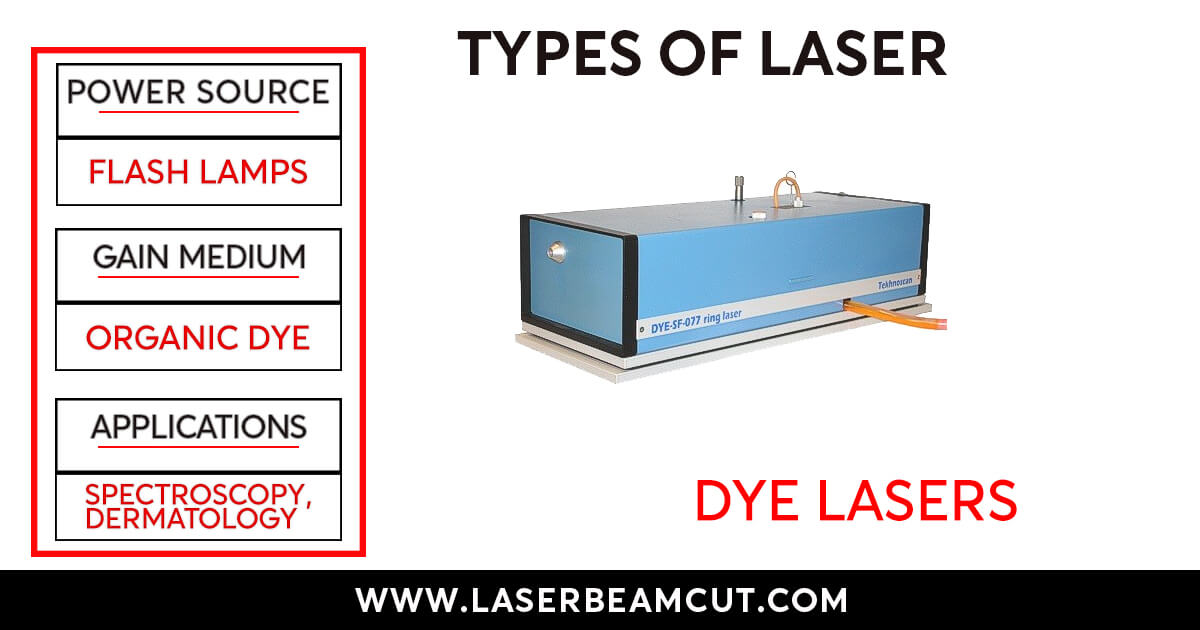
In liquid or dye laser machines, the gain medium contains an organic dye, and their energy pump source is flash lamps or another laser.
These devices have 400-1000 nm wavelength.
Dye laser machines use in spectroscopy and dermatology, infrared microscopy, and collagen formation.
Semiconductor Laser-Devices:
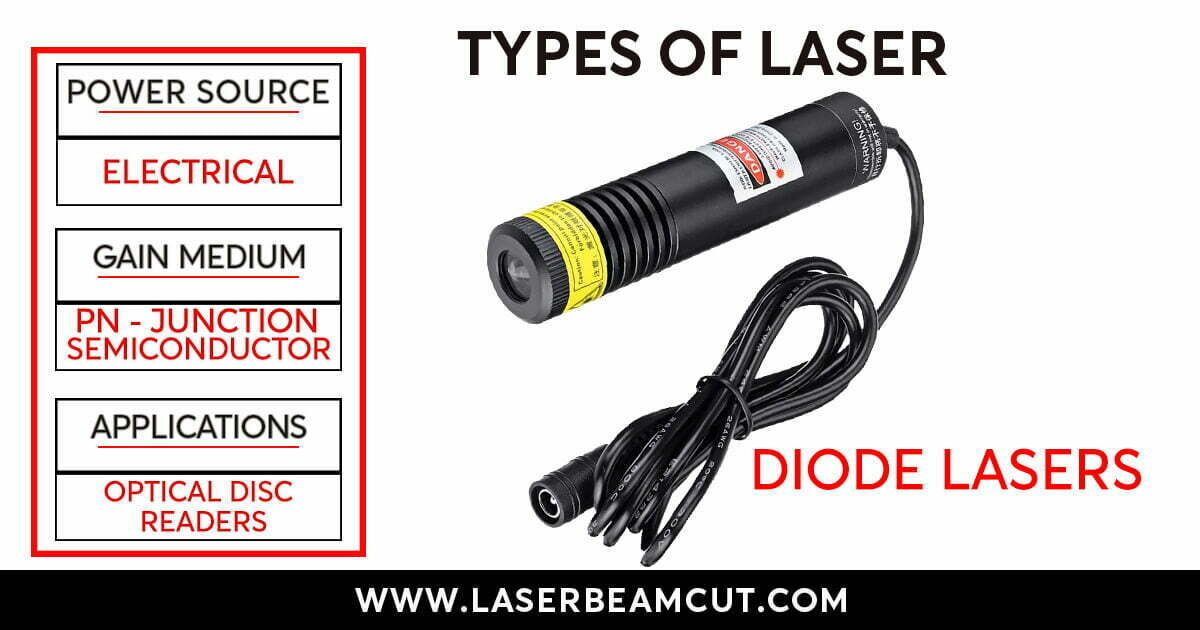
In a semiconductor laser, also called a diode laser, the gain medium contains a PN-junction semiconductor, and their energy pump source is electrical energy.
Semiconductor laser machines can operate in any polarization direction and have very high power output.
These devices have 410-2000 nm wavelength.
Their applications are in optical disc readers and metal processing.
Classification of Lasers By Safety Norms
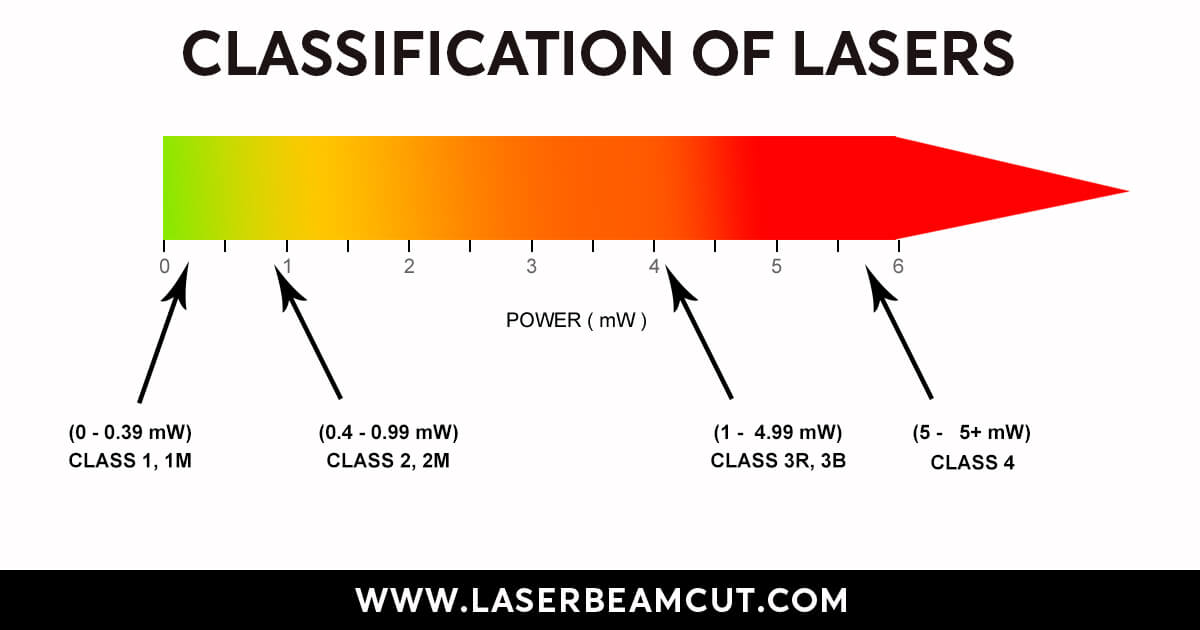
- Class-1 & 1M
- Class-2 & 2M
- Class-3R & 3B
- Class-4
The Classification of Lasers : Class 1 & 1M
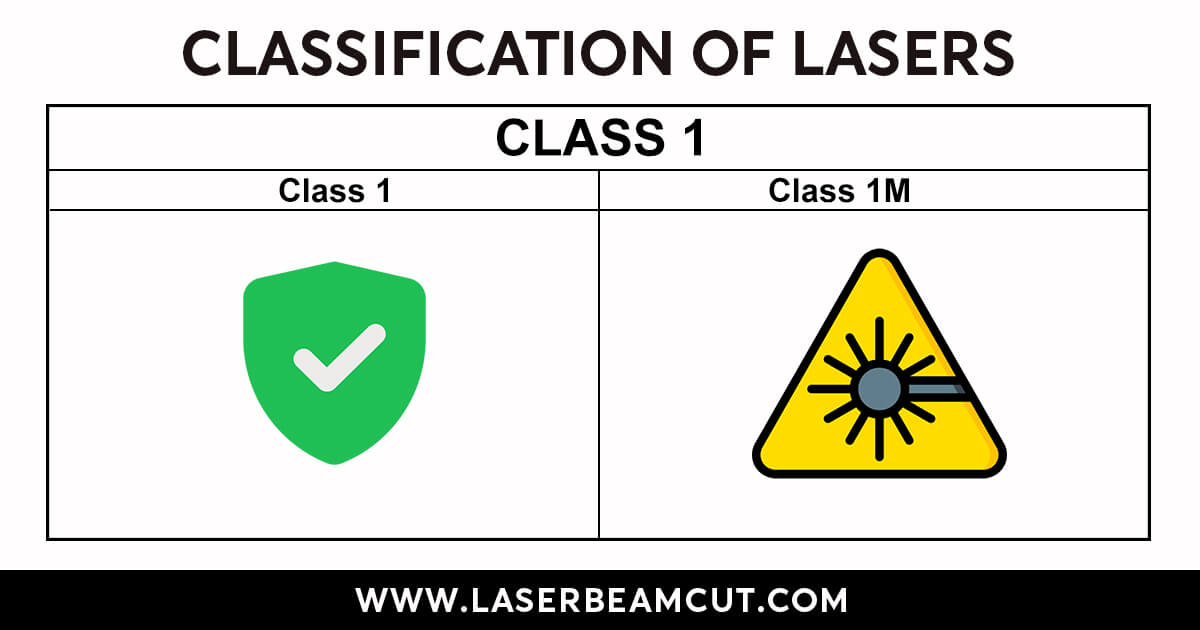
Laser-classes 1 is small in size and is safe for us. These class-1 types emit lights in the visible spectrum and have a maximum power output of 0.39 mW.
These class-1 device applications are presentation pointers and as well as for reading materials.
Although Class 1M has the same legal classification as Class 1 lasers.
They emit lights in the near-infrared spectrum and can be hazardous to the eye if viewed through an optical instrument.
Examples of Class-1 and 1M Laser-Devices:
Some examples of these classes are laser printers, pointers, DVD players, etc.
Classification of Lasers : Class 2 & 2M
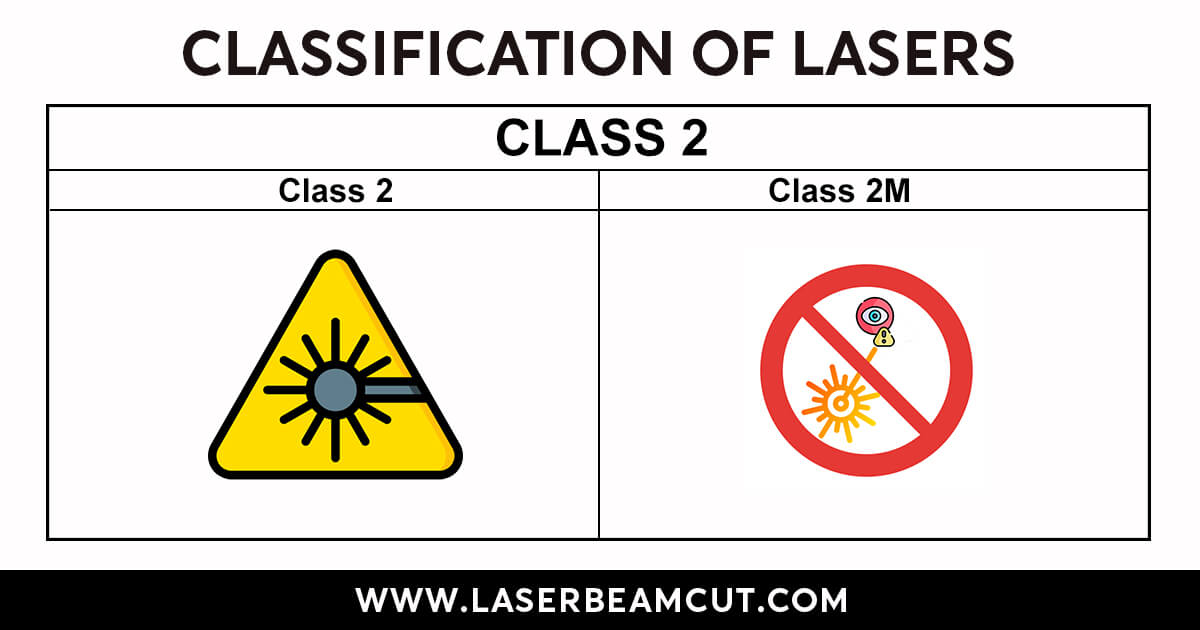
The Class 2 laser devices also have a visible spectrum and a max power of 1 mW.
Although Class-2M has the same legal classification as Class 2, it can be hazardous to the eye if viewed through an optical instrument.
Examples of Class 2 and 2M Laser Devices:
Barcode Scanners, Optical Level Instruments
Classification of Lasers : Class 3R & 3B
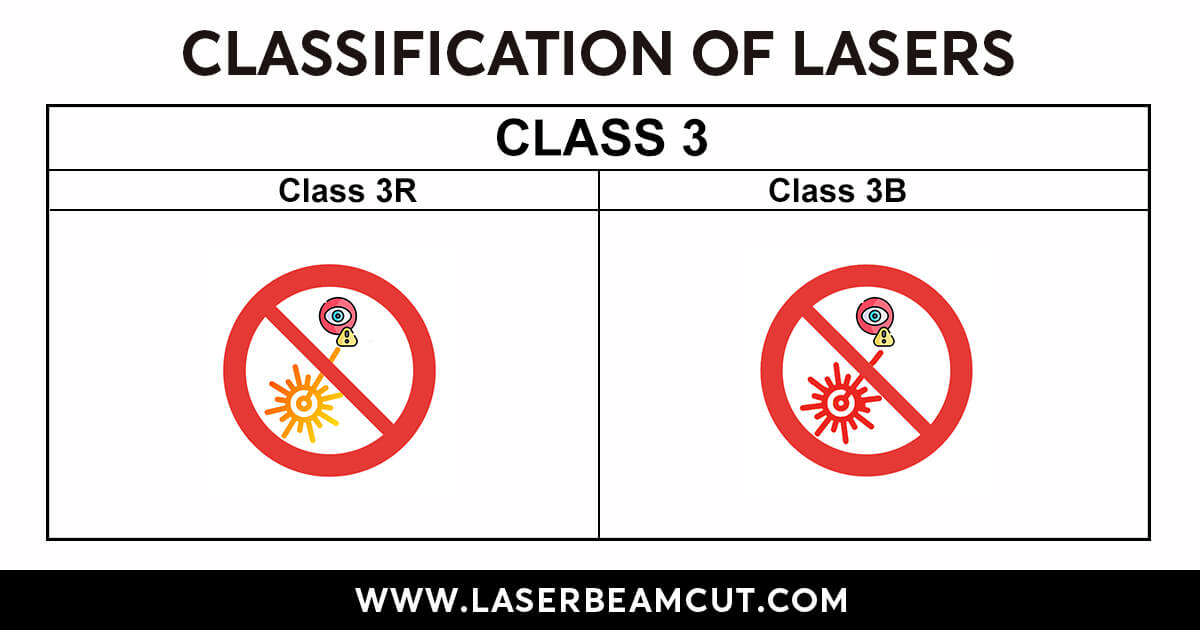
Laser-class 3R and 3B also emit lights in a visible spectrum.
The maximum power for 3R laser machines is 1- 4.99 mW, and for class-3B devices, it is 5-500 mW.
These laser-machine types are safer as compared to class-3B.
Seek immediate medical attention if your eyes are exposed to a class 3R laser machine to reduce the risk of eye damage and ensure safe eyesight. However, in the case of class 3B laser devices, there are no available treatments.
Some applications of class-3 laser-machine are in spectrometry and stereolithography.
Classification of Lasers : Class 4
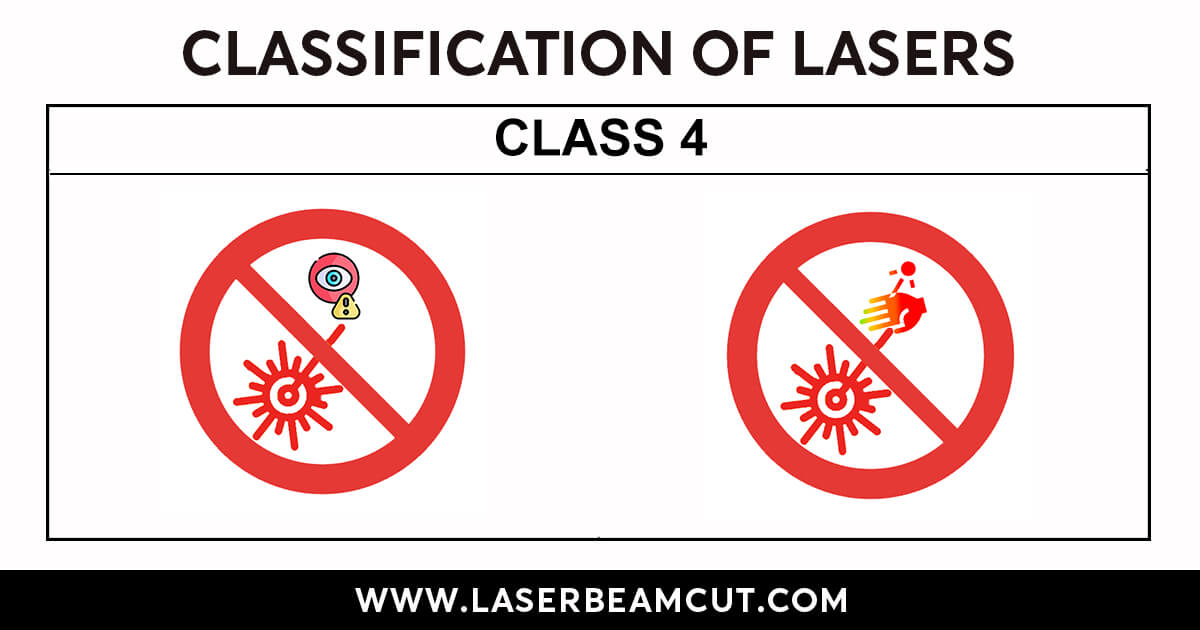
These laser-machine types are the most hazardous and have a laser output power of 500mW or more.
These can burn the skin and can also cause eye damage.
These classes of laser-device applications are in material processing like engraving and cutting.
Conclusion (Classification of Lasers):
It is a comprehensive blog on laser technology and its classification based on safety norms. If you have any inquiries or suggestions, you can contact us by filling out the contact form.
Frequently Asked Questions ( FAQs about Laser Technology and its Classification ):
1. Is laser just thermal energy?
Ans: No, the laser is light. So it is electromagnetic energy.
2. Which are the three fundamental parts that make up a laser device?
Ans: Power source, Resonator, Optical Cavity

